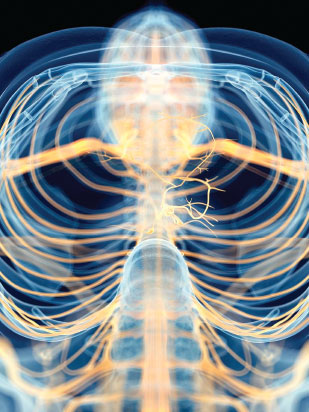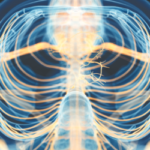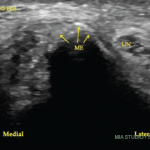
SEBASTIAN KAULITZKI/Science Source
When rheumatologists think about rheumatoid arthritis (RA), they are apt to picture the synovium, contemplate such antibodies as rheumatoid factor and those to citrullinated proteins, and consider how this interplay of factors manifests in disease. What is not as commonly discussed is the role the autonomic nervous system plays in the pathogenesis and symptomatology of RA.
Evaluating Autonomic Function
In 2014, a group of researchers sought to evaluate autonomic function in RA as a potential mechanism by which the disease can increase cardiovascular mortality. The authors ultimately demonstrated that autonomic nervous system (ANS) dysfunction was present in about 60% of patients with RA across the 40 studies included in the review.1 Such a finding is important because, beyond its effects on the cardiovascular system, the ANS also appears to play a significant role in regulating inflammation in animal models and humans.2,3
The association between ANS dysfunction and RA raises an important question: Is the ANS imbalance a result of chronic inflammation, or do changes in the ANS affect inflammation, disease development and severity of RA?
The answer to that question is not clear, according to Matthew Baker, MD, MS, clinical assistant professor and clinical chief, Division of Immunology and Rheumatology, Stanford University, Palo Alto, Calif., and Mark Genovese, MD, senior vice president, inflammation, at Gilead Sciences Inc., Foster City, Calif. However, Dr. Baker notes the research cited above and anecdotal observations of improved RA symptoms on the side of hemiparesis in patients who have had stroke have inspired further evaluation of the neurologic/immunologic connection in RA.
The Science
Two studies have been conducted in recent years with implantable vagus nerve stimulation devices as a possible treatment for RA. These studies demonstrate improvements in systemic inflammation and disease activity and show good safety profiles for these devices.4,5
To build on this work, a proof-of-concept study was conducted of a noninvasive vagus nerve stimulation device for the treatment of patients with RA. Thirty patients with active RA and an inadequate response to treatment with disease-modifying anti-rheumatic drugs (DMARDs) were enrolled in the study. Active disease was defined as a Disease Activity Score of 28 joints with C-reactive protein (DAS28-CRP) of >3.8, with four or more tender joints and four or more swollen joints on 28 joint count and any active osteitis or articular synovitis in the wrist or hand as confirmed by ultrasound or magnetic resonance imaging (MRI). An inadequate response was defined as patients who had tried one or more conventional synthetic DMARDs for at least 12 weeks, including with a stable dose for four weeks or longer before enrollment, or had failed to respond to or did not tolerate one biologic DMARD. Biologic DMARDs were discontinued at least four weeks prior to the start of the trial, and use during the trial was not permitted.
Eligible participants were assigned to use a noninvasive, wearable vagus nerve stimulation device that generated electrical pulses that were then delivered transcutaneously to the external ear. Patients were asked to use the device for up to 30 minutes each day and were restricted from making adjustments to stimulation parameters. The earpieces for the devices were personalized to fit each patient comfortably and the device logged patient usage to track compliance.
Baseline measures of RA activity included DAS28-CRP, the Health Assessment Questionnaire-Disability Index (HAQ-DI), MRI, ultrasound, blood analyses and a sleep quality assessment. Follow-up visits took place at weeks 1, 2, 4, 8 and 12. The primary endpoint in the study was mean change in DAS28-CRP at week 12 compared with baseline, and secondary endpoints included safety analysis; the proportion of patients achieving ACR20, ACR50 and ACR70 responses; the proportion of patients achieving a difference of 0.22 on HAQ-DI at week 12; and mean change in HAQ-DI at week 12.


